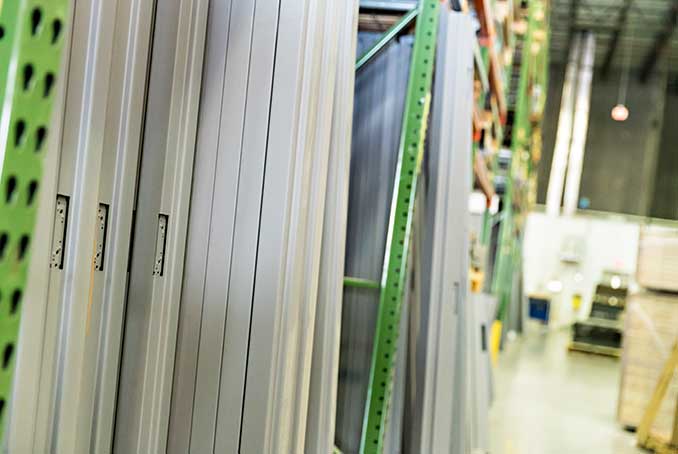Frames
DON’T GET “JAMB” UP: KNOW YOUR WALL THICKNESS
Nov 13, 18

What determines the jamb depth?
Part 1: Jamb depth starts with determining the wall thickness. So, how do I know what the thickness of the wall is? The partition types indicate the wall thickness. The partition types include the width of the stud, the thickness of the drywall (both sides), and the thickness of finishing material on each side (i.e., tile, paneling, etc.). Adding the thickness of all of this material together equals the WALL THICKNESS. Wall thickness is also known as the throat.
Part 2: After determining the wall thickness you need to account for the “backbend” of the frame. What’s backbend you say? That’s the part of the frame that extends beyond the wall thickness to complete the frame. Hollow metal frames typically have a backbend of ½” on each side. The wall thickness PLUS the backbend gives you the JAMB DEPTH.
EXAMPLE: For example, 3 ⅝” metal stud plus ⅝” sheetrock (each side, which is 1 ¼” total) equals a 4 ⅞” wall thickness. When you add the additional inch for the backbend, your jamb depth in this case is 5 ⅞”. Voila!
Latest News
Dec 4, 19
The Company
Atlass Hardware Expands to the Caribbean
As we head into the holiday season, we are happy to share that the Atlass Hardware family is growing, and we have even m...
Mar 5, 19
Best Practices
On Site Storage: Hollow Metal
Keep your hollow metal doors safe on the job site by implementing these best practices.
Feb 15, 19
Best Practices
On Site Storage: Prehung Doors
Don’t let your doors get hung out to dry. Implement these best practices for storing your prehung doors on the j...